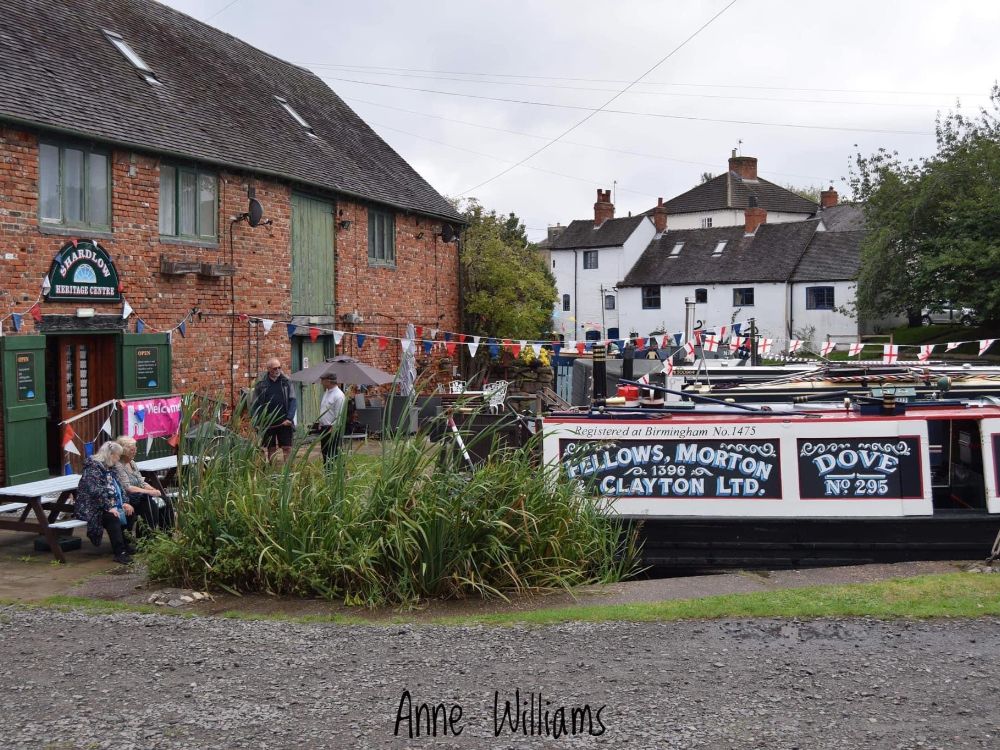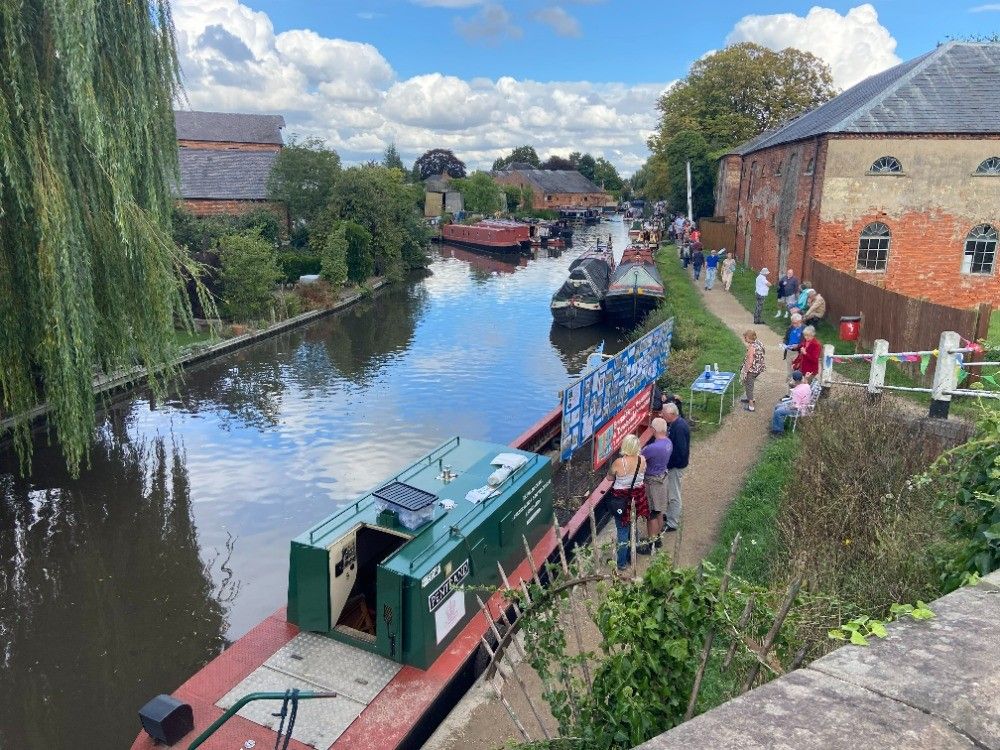


About the Heritage Harbour:
The Inland Port area of Shardlow village is home to some of the best examples of 18th century canal architecture in Britain.
The Trent & Mersey canal, designed by James Brindley was completed in 1777 through the village to connect the canal to the navigable River Trent benefitting
trade from as far afield as Cheshire, Derbyshire and The Humber.
There are 50 Grade ll listed structures in Shardlow ranging from Fosbrooke’s grand “Shardlow Hall” of 1684 to the humble canal side warehouses of which “A” is the earliest example.
Maritime Visitor Attractions:
- Shardlow Heritage Centre - The Heritage Centre is open most weekend afternoons and Bank
Holidays from April to October - Red Transport Wheel - located on the outside of the Heritage Centre as acknowledgement of the
18th Century transport links. - The locks and towpath
In the Past:
The earliest evidence of boating activity along the River Trent in Shardlow dates back 3,400 years to the Bronze Age with the discovery of a wooden log boat believed to be used to ship dressed stone.
With a mention in medieval Doomsday book of 1086 the hamlet of Shardlow continued to grow with the establishment of a small river port for trade in salt and Derbyshire cheese in the 17th century. However, it is during the 18th century that the the village expanded rapidly with the cutting of the Trent & Mersey canal. Goods either arrived or were dispatched from the River Trent in wide sailboats and barges. Cargo, for example coal and grain arriving in the Port from the river barges was either transshipped onto narrowboats for onward distribution or stored in warehouses while awaiting redistribution by road. Goods, for example Derbyshire cheese from the north, salt and pottery from narrowboats arriving from the west were again either trans shipped onto the Trent River Boats or into warehouses awaiting road distribution
This golden age of development in the 18th Century brought with it a plethora of businesses based within the village, shops, butchers, leather work, candle makers, joiners, workshops, boat builders, rope makers, brewery, stables and grain stores amongst many. Impressive Merchant Houses, managers houses and workers cottages were constructed in close proximity to each other and the canal, many survive to date.
With the advent of the railways the canal trade declined and many of the warehouses were redeployed for different uses or latterly converted into dwellings. By the 1950’s the last orn mill was decommissioned signalling the end to trade through the Inland Port of Shardlow
Now and the Future:
Much of what we see today in Shardlow was shaped by the early entrepreneurs of the 18th century. Many of the buildings have been adapted from their original use as wharves, warehouses and basins to create gardens and homes for the current residents. Some warehouses retain a commercial use, but as the stores, shops, butchers and brewery have been either demolished or repurposed the atmosphere has changed from a bustling hive of activity 1770 - 1860 to a more gentle and reflective atmosphere today.
There is a wealth of heritage and history within the village, designated as a conservation area in 1975 and boasting 50 Grade ll listed structures within the Parish, however the outlook for several architecturally significant warehouses and some merchant houses is bleak as many of these buildings are being allowed to fall into disrepair. The terminal decline of these buildings through neglect will forever change the historical importance of Shardlow.
Future plans include visiting heritage vessels and maritime heritage events

